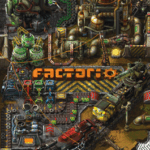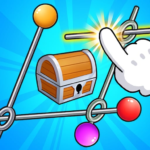Core Keeper is a 2D sandbox adventure game developed by Pugstorm and published by Fireshine Games. Blending elements of exploration, survival, base-building, and multiplayer co-op, it immerses players in a mysterious, procedurally generated underground world. The game launched in Early Access in March 2022 and officially released in 2024 across PC, PlayStation, Xbox, and Nintendo Switch.
What sets Core Keeper apart is its combination of cozy aesthetics, satisfying progression, deep customization, and unique biome discovery. Whether you’re playing solo or with up to 8 friends, it offers an underground journey filled with exploration, secrets, crafting, farming, and combat.
1. Early Access Launch and Rising Popularity
The game's Early Access release in March 2022 quickly gained momentum. Thanks to a successful demo during Steam Next Fest and support from streamers, Core Keeper attracted hundreds of thousands of players within weeks. Its early build already featured a compelling gameplay loop, making it one of the most talked-about indie survival games at the time.
Players praised its low barrier to entry, cozy yet mysterious tone, and the refreshing premise of starting deep underground rather than on the surface. Regular updates, developer transparency, and community feedback helped the game build a strong, loyal player base.
2. A World Below: Biomes and Exploration
Core Keeper's world is entirely subterranean, procedurally generated with vast, interconnected biomes. Players begin at the Core and must dig outward into the unknown, uncovering visually distinct zones filled with different resources, enemies, and puzzles.
Biomes and Terrain
The game features a variety of biomes such as the Clay Caves, the Forgotten Ruins, the Desert of Beginnings, and the Sunken Sea. Each has its own unique set of flora, fauna, and environmental challenges. For example, the Desert biome features sand-based enemies and heat hazards, while the Sunken Sea introduces water traversal and aquatic dangers.
Discovery and Mapping
Players use tools and torches to navigate the dark caves. The lighting system plays a crucial role, adding suspense and rewarding careful exploration. Each step forward may reveal rare minerals, dungeons, or minibosses waiting in the shadows. A built-in map helps you keep track of discovered areas, further encouraging you to expand your reach.
3. The Crafting System and Base Building
Crafting is central to Core Keeper’s gameplay. Players start with primitive tools and gradually unlock advanced workbenches, machinery, and automation systems.
Progression Through Crafting
The tech tree unfolds as players gather ores like copper, tin, iron, and scarlet. New tools, armor, and gear open up deeper biomes. Workbenches can be upgraded, unlocking more efficient stations like electronics labs or railway tables. This vertical crafting progression allows for constant improvement and excitement.
Base Building
Players can build and decorate personalized underground bases. From simple stone huts to elaborate workshop-labs, your base becomes the hub for storage, farming, cooking, and crafting. As automation options become available (such as drills, electricity, and conveyor systems), your base can function almost autonomously.
4. Combat and Boss Encounters
Combat in Core Keeper is simple to learn but has depth, especially during boss fights. The game features both melee and ranged weapons, with upgradeable gear that can affect your speed, stamina, and attack power.
Enemy Variety
From worms that tunnel through rock to aggressive mushroom creatures and biome-specific mini-bosses, each enemy type has distinct behaviors. Players must choose the right armor, weapons, and buffs to handle various threats effectively.
Boss Battles
Major bosses, such as Glurch the Abominous Mass or Azeos the Sky Titan, require planning and strategy. Some bosses can be summoned by crafting items; others must be found deep in hidden biomes. Defeating a boss often unlocks new areas, powers for the Core, or valuable loot to progress further.
5. Skills and Character Growth
One of Core Keeper's most beloved features is its passive skill system. Instead of traditional RPG leveling, skills improve through use. For example, mining stone increases your mining skill, while running boosts movement speed over time.
Key Skills
-
Mining
-
Running
-
Melee Combat
-
Ranged Combat
-
Fishing
-
Cooking
-
Crafting
Each skill offers its own progression tree with perks. This organic growth rewards player style and provides long-term goals for frequent playthroughs.
6. Farming, Cooking, and Fishing
Beyond combat and crafting, Core Keeper also emphasizes cozy, survival-based gameplay through farming, cooking, and fishing systems.
Farming
Players can grow crops like bomb peppers, heart berries, and glow tulips. Farms can be irrigated and lit to allow for efficiency and automation. Over time, players unlock sprinklers and soil modifiers to maximize crop output.
Cooking and Buffs
Combining two ingredients in a cooking pot produces meals with varying effects. Some increase movement speed or health regeneration, while others offer temporary damage boosts or resistances. Experimenting with recipes is both fun and beneficial.
Fishing
Fishing is relaxing and strategic. Different bodies of water yield different fish species. These can be cooked or used for potion-like effects, adding depth to resource gathering.
7. Multiplayer and Co-op Experience
Core Keeper shines in multiplayer. With up to 8-player online co-op, friends can work together to mine, explore, fight bosses, or simply build creative bases.
Collaborative Gameplay
Multiplayer allows for specialized roles—one player can focus on farming while another handles mining or exploration. Coordinating boss fights, managing shared resources, and building large, functioning underground towns is deeply satisfying in a group setting.
Server Flexibility
Players can host their own servers, join friends, or even explore solo worlds together. Progression is tied to the world, not individual players, making shared long-term goals rewarding.
8. Full 1.0 Release and New Features
In August 2024, Core Keeper officially launched its 1.0 version. This brought a wealth of features that expanded gameplay significantly.
New Content in 1.0
-
The Passage Biome (new endgame content)
-
Mage and Warlock combat classes
-
World seed customization
-
PvP toggles
-
New bosses, tools, and decorative blocks
These additions addressed many early access player requests and added more variety for long-term engagement. The Mage class, in particular, brought magic combat into the mix with spellbooks and mana-based abilities.
9. Technical Performance and Accessibility
Core Keeper runs smoothly on most modern systems. The pixel-art graphics are lightweight, and the game supports keyboard/mouse or controller input. It performs well even on mid-tier PCs and older consoles.
Pros in Performance
-
Low system requirements
-
Runs well on Nintendo Switch and handheld PCs
-
Minimal load times
-
Cloud save support
Areas to Improve
-
Occasional crashes or memory issues on very large maps
-
Lack of official mod support (still in high demand)
-
UI can feel cluttered in split-screen or high-inventory sessions
Despite these, the developers have been consistent in delivering patches and quality-of-life updates.































